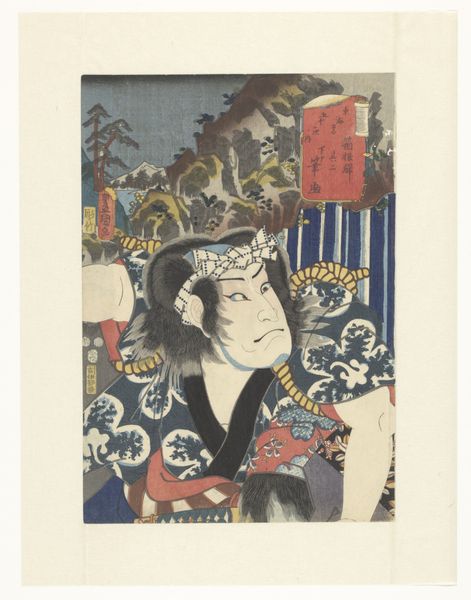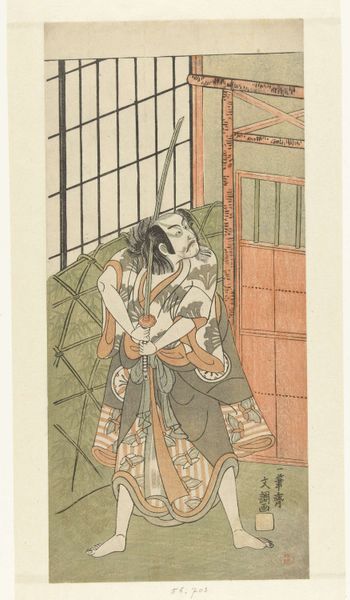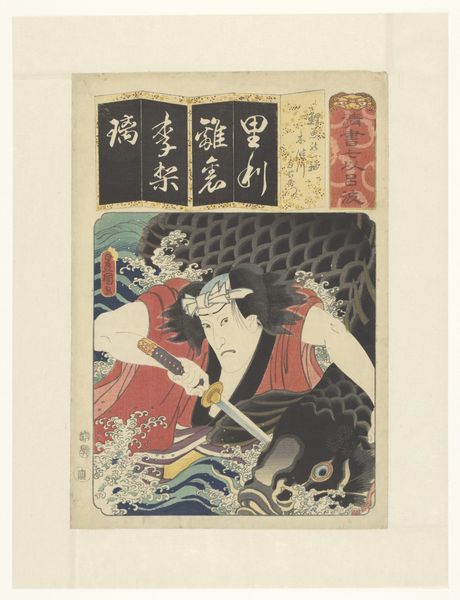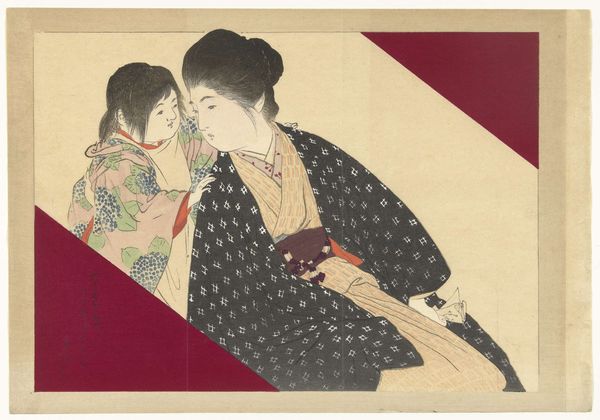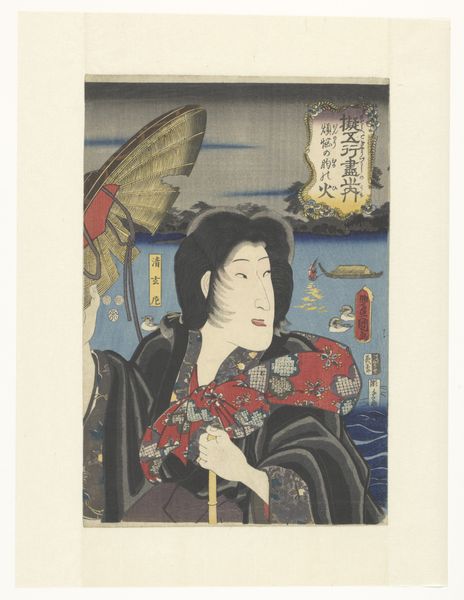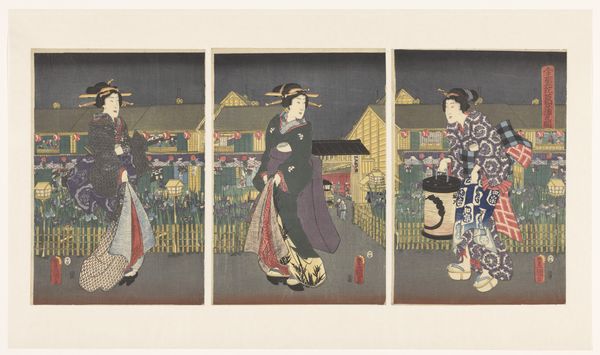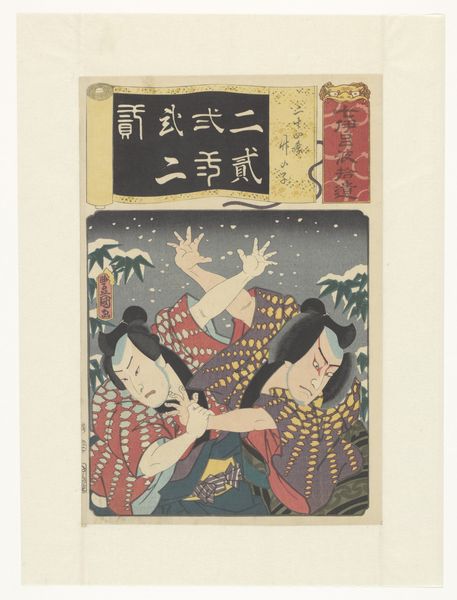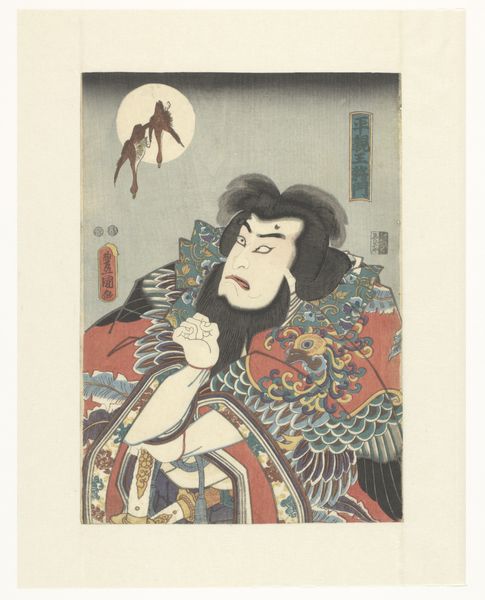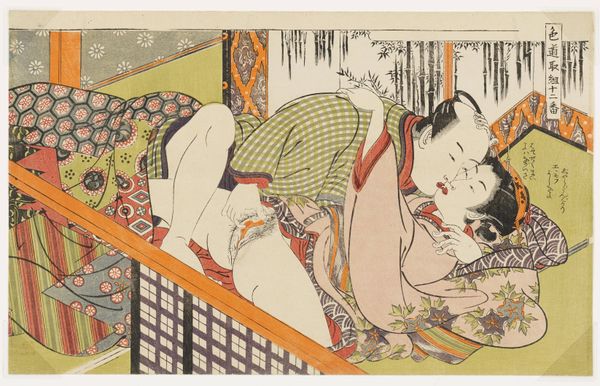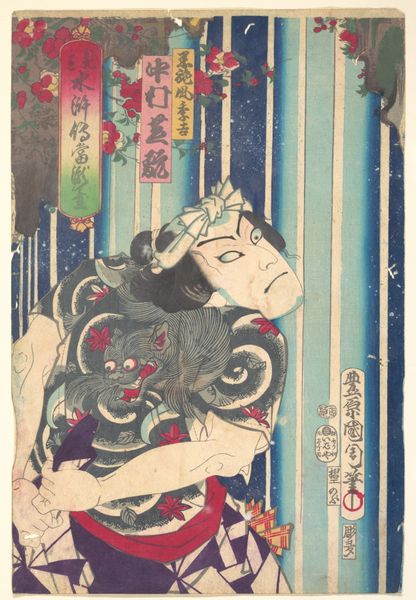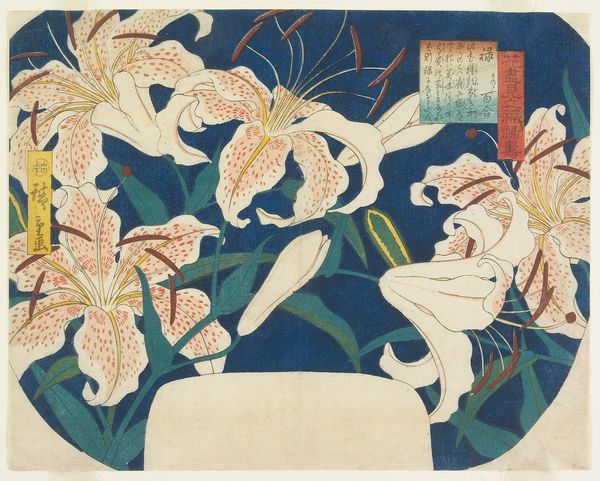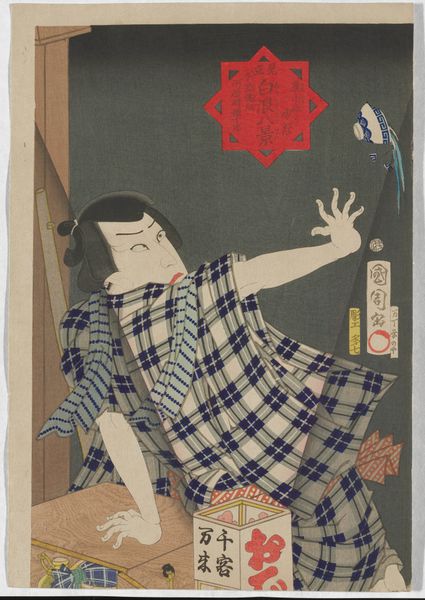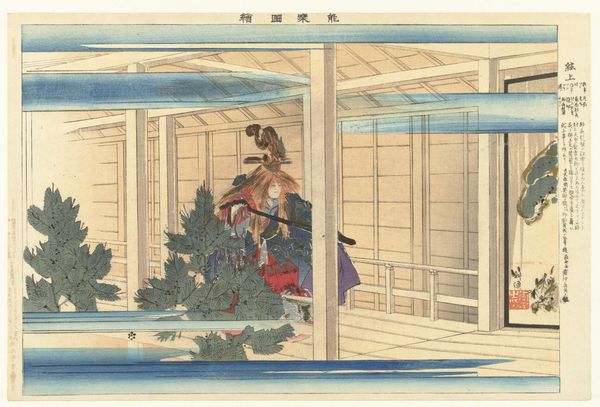![['The fifth month, Gorô Tokimune', 'Parodies of the twelve months'] by Utagawa Kunisada](/_next/image?url=https%3A%2F%2Fd2w8kbdekdi1gv.cloudfront.net%2FeyJidWNrZXQiOiAiYXJ0ZXJhLWltYWdlcy1idWNrZXQiLCAia2V5IjogImFydHdvcmtzL2E2ZWJkZjQ3LWZlNDMtNDlmZi1iZDlkLTRlYzVkZmY2ZjdiYy9hNmViZGY0Ny1mZTQzLTQ5ZmYtYmQ5ZC00ZWM1ZGZmNmY3YmNfZnVsbC5qcGciLCAiZWRpdHMiOiB7InJlc2l6ZSI6IHsid2lkdGgiOiAxOTIwLCAiaGVpZ2h0IjogMTkyMCwgImZpdCI6ICJpbnNpZGUifX19&w=3840&q=75)
['The fifth month, Gorô Tokimune', 'Parodies of the twelve months'] 1852 - 1859
0:00
0:00
# print
#
asian-art
#
landscape
#
ukiyo-e
#
figuration
Dimensions: height 361 mm, width 258 mm
Copyright: Rijks Museum: Open Domain
Curator: The Ukiyo-e print before us, “The fifth month, Gorô Tokimune” from the series "Parodies of the twelve months," was created by Utagawa Kunisada between 1852 and 1859. It's currently held at the Rijksmuseum. I'm immediately struck by the rich materials. It really is quite impressive. Editor: He looks terrifying. It's arresting, the use of color contrasts—the deep indigo blues versus the intense reds in the actor’s makeup. And that fierce expression…what's the context of this character, this Goro Tokimune? Curator: In kabuki theater, Tokimune is famed for his incredible strength and courage. Kunisada, a popular printmaker of his day, capitalizes on that fame and utilizes woodblock printing. Ukiyo-e prints like this became accessible forms of entertainment and news dissemination among a wider audience in Edo-period Japan. Think about the skilled labor involved in carving the blocks. The collaborative production between the artist, the carver, and the printer resulted in these visually dynamic prints. Editor: It speaks volumes about Edo society that these kabuki actors achieved such widespread fame and became figures who represented certain values. The layering of identity through theatrical representation really complicates our understanding of self and societal expectation. Were these prints merely decorative, or did they serve some social function? Curator: I believe they held a dual role. These prints are aesthetically captivating objects produced through sophisticated means, but they simultaneously documented contemporary culture and reinforced cultural narratives. For example, in this image we also get a brief look into daily life: through the window panel on the left, you can see it's raining. I can feel the weight of history embedded in the object itself. Editor: The distribution networks for these prints are fascinating. Examining where and how they were circulated can tell us a lot about social dynamics and popular culture in the 19th century. It goes to show that the creation and consumption of images play an essential role in shaping our perception of the world and perpetuating its hierarchies. Curator: Looking closely at the colors now makes me reconsider them. There seems to be extensive bleeding, evidence of production limitations that the publishers would seek to minimize in higher production editions. Perhaps that would offer insights into what social classes purchased it? Editor: The accessibility afforded by the mass-produced print creates fascinating issues about ownership, power, representation. Fascinating stuff!
Comments
No comments
Be the first to comment and join the conversation on the ultimate creative platform.
